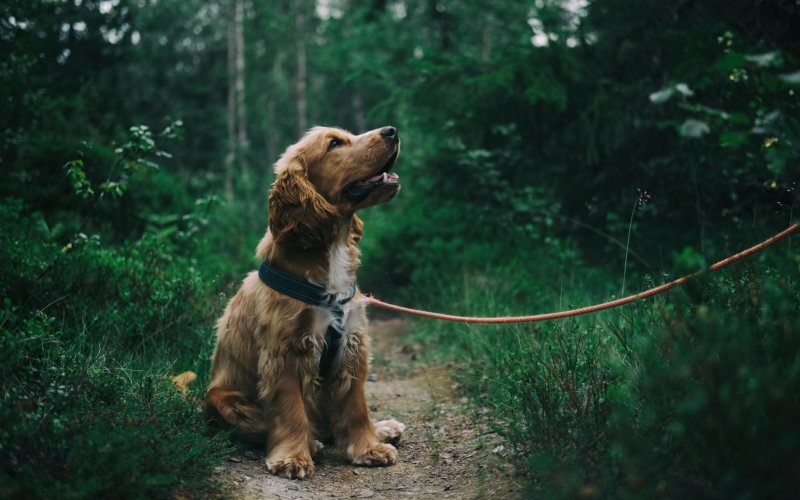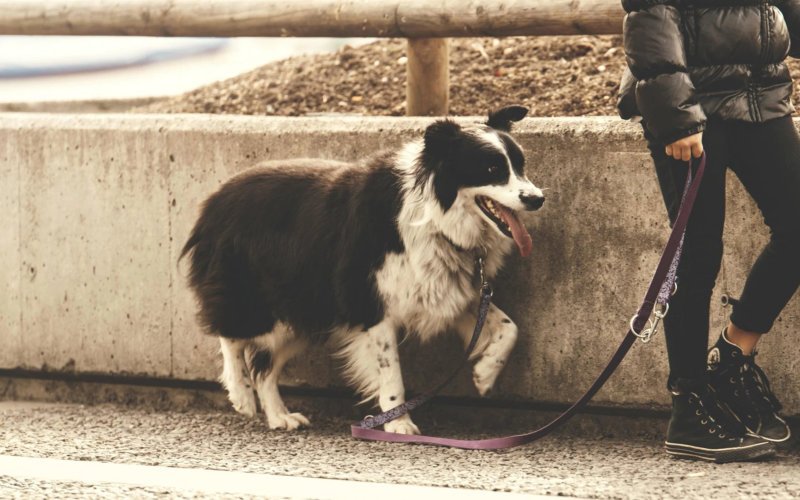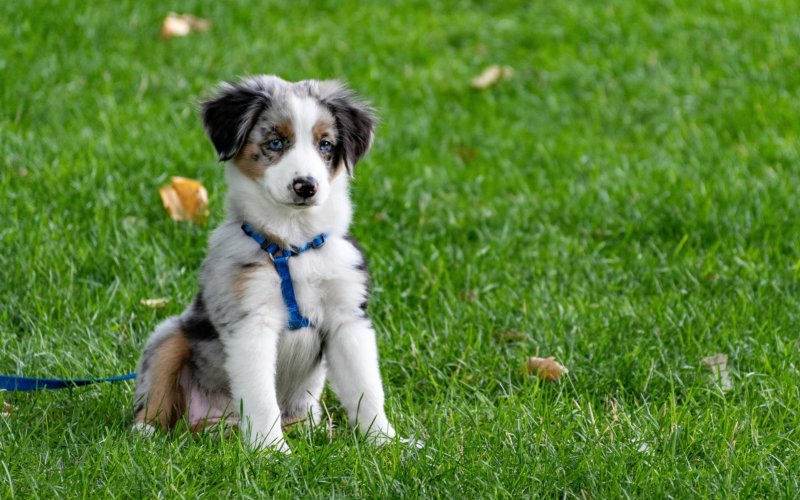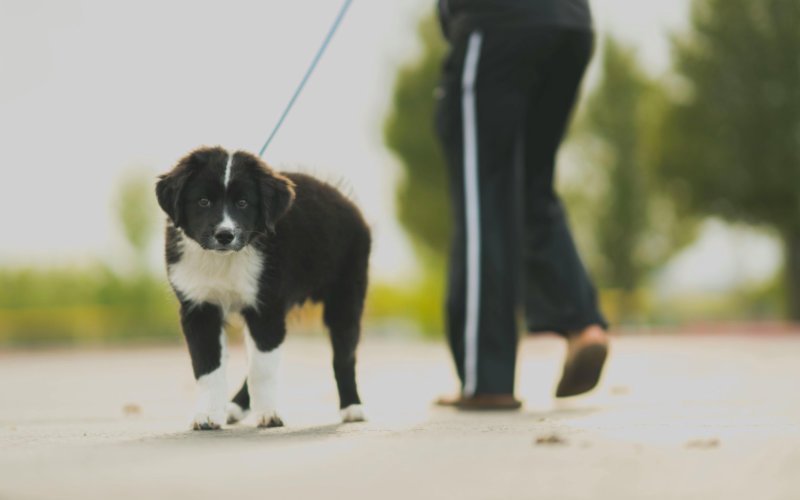Looking for helpful dog walking tips to make your daily walks easier and more enjoyable? Whether you’re a new dog owner or looking to improve your routine, these tips will ensure both you and your dog have safe, fun, and rewarding walks every time. From choosing the right equipment to mastering key training commands, we’ve got you covered with everything you need to know to enhance your dog walking experience.
Table of Contents
Benefits of Regular Dog Walks
When it comes to dog walking tips, establishing a consistent walking routine offers a range of benefits for both you and your dog. Regular walks aren’t just about getting exercise; they also provide essential mental stimulation, promote socialisation, and can improve your dog’s overall behaviour.
Physical Health Benefits
One of the most important dog walking tips is to prioritise regular exercise. Routine walks help to maintain your dog’s weight, build muscle tone, and strengthen their cardiovascular system. Regular activity reduces the risk of obesity and related health issues, such as joint problems and diabetes, ensuring your dog stays fit and healthy.
Mental Stimulation and Enrichment
Walks provide dogs with an opportunity to explore the world around them, which offers mental enrichment. New smells, sights, and sounds help engage your dog’s senses and keep their mind active. Mental stimulation is essential for dogs to prevent boredom, which can lead to behavioural issues at home. An enriching walk allows your dog to expend mental energy, keeping them content and relaxed.
Socialisation and Behavioural Improvement
Among the most valuable dog walking tips is the benefit of socialisation. Regular walks expose your dog to different environments, people, and other animals, which is essential for their social development. This interaction helps them become comfortable in a variety of situations, making them less likely to exhibit fear or aggression. Well-socialised dogs are generally calmer and more confident, making everyday life more enjoyable for you and your pet.
Strengthening the Bond Between You and Your Dog
Walks are a great way to spend quality time with your dog, strengthening the bond between you. Shared experiences, especially regular ones, build trust and a deeper connection. This bonding time is crucial for creating a strong relationship, and it’s also one of the simplest ways to show your dog care and attention.
Reducing Stress and Anxiety
Just as humans benefit from a good walk to clear their minds, dogs also find walks relaxing and stress-relieving. Regular outings can reduce anxiety, particularly in dogs that experience nervousness or separation anxiety. Daily walks provide a structured routine, which helps anxious dogs feel secure and reassured.
Improving Overall Behaviour
Dogs that get enough physical and mental exercise are generally better-behaved at home. Routine walks can reduce destructive behaviours such as chewing, excessive barking, and digging by giving dogs an appropriate outlet for their energy. Following these dog walking tips can lead to a happier, calmer dog and a more harmonious home environment.

Choosing the Right Equipment
One of the most essential dog walking tips is to choose equipment that keeps your dog comfortable, safe, and easy to control. With so many options available, it can be overwhelming to know which gear to invest in, but selecting the right lead, collar, and harness can make a big difference in how enjoyable walks are for both you and your dog.
Collars vs. Harnesses
When deciding between a collar and a harness, consider your dog’s breed, size, and behaviour. For smaller breeds, like French Bulldogs or Shih Tzus, a harness is often the better choice as it distributes pressure evenly across the chest, which reduces strain on the neck and spine. Larger breeds, or dogs that pull, may also benefit from a harness, as it provides more control. Collars, however, are convenient for dogs that don’t pull and are generally calm on walks.
If you opt for a collar, ensure it fits comfortably. It should be snug enough that it won’t slip over your dog’s head but loose enough to fit two fingers underneath.
Leash Types
The type of lead you choose can also impact your dog walking experience. Standard leads, which are usually around 1-2 metres long, are great for maintaining control and are ideal for training. Retractable leads, while popular, can encourage pulling and make it harder to control your dog, especially near traffic. Long leads, around 5-10 metres, are useful for giving your dog a bit more freedom in open, safe areas while still maintaining control.
For British dog owners, a reflective lead is a great choice for winter months, as it improves visibility in low-light conditions, keeping both you and your dog safe.
Comfortable and Safe Harnesses
For dogs prone to pulling, consider a front-clip harness, which discourages pulling by redirecting the dog towards you when they pull. A back-clip harness is a good option for well-behaved walkers and puppies, as it’s gentle and comfortable for learning leash manners.
When choosing a harness, look for adjustable straps and soft padding. This ensures a secure fit without causing rubbing or discomfort. Check that the harness is easy to put on and take off, especially for dogs that are sensitive to handling.
Additional Equipment and Accessories
For added convenience and safety, consider investing in a few other walking accessories. A sturdy, clip-on poo bag holder ensures you’re always prepared for clean-up duties, and a portable water bottle can help keep your dog hydrated during long walks.
In cooler months, a reflective jacket or light-up collar can improve visibility and keep your dog safe in low-light conditions. And don’t forget ID tags on their collar or harness – a must-have in case they wander off.
Preparing Your Dog for Walks
Proper preparation before heading out can make walks smoother, safer, and more enjoyable for both you and your dog. Following these dog walking tips will help you set up a positive walking routine and ensure your dog is ready for the outing.
Establishing a Pre-Walk Routine
Creating a simple, consistent pre-walk routine can help your dog get used to the idea of going for a walk. Try to follow the same steps each time, such as gathering your lead and harness, putting on any necessary gear, and calmly leading them to the door. Dogs thrive on routine, and this helps signal that it’s time to walk without getting them overly excited or anxious.
Practising Calm Behaviour
One essential dog walking tip is to practise calm behaviour before you leave the house. If your dog becomes overly excited or jumps around when you grab the lead, take a few moments to help them settle down before starting the walk. This could involve using a simple “sit” command and only attaching the lead once they are calm. Teaching calmness before heading out sets the tone for a well-behaved walk.
Building Leash Skills Indoors
For dogs that are new to walking on a lead, start by practising leash skills indoors. Allow them to get used to wearing the lead and harness while in a comfortable, distraction-free environment. Short, indoor practice sessions can help your dog adjust to the feeling of the lead and improve their focus on you. This is particularly useful for puppies or dogs that tend to pull.
Checking for Comfort and Safety
Before heading out, check that all equipment is comfortable and secure. Ensure the harness or collar isn’t too tight or too loose and that any clasps are properly fastened. Dogs can become irritated if their equipment is uncomfortable, so make sure everything fits well to prevent chafing or rubbing.
Bringing Essentials
Preparation includes bringing along a few essentials. One of the best dog walking tips is to have poo bags, a portable water bowl (especially in warm weather), and some treats or a favourite toy to reward good behaviour. Being prepared for different scenarios helps you handle any issues that may arise on the walk and keeps your dog’s needs met.
Preparing for Different Environments
Consider the environment you’re walking in and prepare accordingly. If you’ll be near traffic or crowded areas, ensure your dog is accustomed to busier surroundings and is comfortable on a shorter lead. If walking in parks or open fields, a longer lead may give them more freedom to explore. Preparing for the environment keeps your dog safe and makes the walk more enjoyable for both of you.

Understanding Your Dog’s Walking Pace and Stamina
One of the most practical dog walking tips is to adjust your walking pace and distance according to your dog’s individual needs. Understanding your dog’s natural pace, stamina, and breed characteristics will help you ensure they get the right amount of exercise without overdoing it.
Recognising Your Dog’s Natural Pace
Each dog has a unique walking pace. Larger dogs, like Labradors and German Shepherds, often have longer strides and a faster pace, while smaller breeds, such as Dachshunds and Pugs, may prefer a slower, more leisurely walk. Instead of forcing a particular pace, let your dog set a comfortable rhythm. This approach allows them to enjoy the walk without straining to keep up or constantly holding back.
Assessing Stamina Based on Age and Breed
A crucial dog walking tip is to consider your dog’s age and breed when planning your walk. Puppies and young, energetic breeds like Border Collies or Spaniels can typically handle longer walks and even enjoy bursts of play. Older dogs, however, may need shorter, gentler walks, as they tire more easily. Additionally, brachycephalic breeds (like Bulldogs and French Bulldogs) may struggle with long walks due to breathing challenges, so frequent breaks are essential.
Building Stamina Gradually
If your dog is new to regular walks, start with shorter distances and gradually increase their stamina. Begin with 10-15 minute walks and slowly extend the time as they get used to the routine. Gradual increases are especially important for overweight or older dogs, helping them build endurance without strain. Consistency is key; regular, moderate walks will build up their fitness over time.
Watching for Signs of Fatigue
During any walk, keep an eye out for signs that your dog may be getting tired. Heavy panting, lagging behind, or lying down are common indicators of fatigue. If your dog shows these signs, take a break, offer them water, and consider shortening the route. Ignoring these signs can lead to exhaustion, especially in hot weather, so it’s important to be attentive.
Adjusting Walks Based on Weather and Terrain
Weather and terrain can impact your dog’s stamina as well. In warmer months, dogs can tire quickly, so shorter, early morning or evening walks are often best. In winter, dogs may need shorter walks to prevent discomfort from cold. Uneven or rough terrain can also be challenging, especially for small breeds or dogs with joint issues, so aim for paths that are comfortable and safe.
Varying Pace to Keep Your Dog Engaged
Walking at a varied pace can add mental stimulation and keep your dog engaged. Try incorporating short bursts of faster walking or jogging if your dog is able, as it can make the walk more exciting and add a bit of extra exercise. Slow down occasionally to allow your dog time to sniff and explore, providing them with enrichment and enjoyment.
Safety Tips for Dog Walking
When it comes to dog walking, ensuring your dog’s safety is paramount. Following these simple dog walking tips will help you avoid potential hazards, ensuring both you and your dog enjoy a safe, worry-free walk.
Always Use the Right Equipment
One of the most important dog walking tips is to use the correct equipment. A secure harness or collar, along with a strong lead, will help you maintain control over your dog, especially in busy or potentially dangerous environments. Ensure that the harness fits well, as an ill-fitting harness can cause discomfort or even escape. Reflective gear, such as a reflective collar or lead, can also improve visibility in low light, making walks safer during early mornings or evenings.
Stay Aware of Traffic
When walking near roads or traffic, it’s crucial to remain vigilant. Keep your dog on a short lead, particularly in areas with heavy traffic or around blind corners. Avoid distractions such as phone use while walking, as your attention should be focused on the surroundings to ensure safety. If possible, choose routes with quieter roads or dedicated walking paths, particularly for dogs that may be easily startled or distracted by passing vehicles.
Watch Out for Other Dogs
Not all dogs are friendly, so always be cautious when approaching other dogs, especially off-lead dogs. One of the dog walking tips to remember is to keep your dog on a lead when near others, even if they’re well-behaved. If you see another dog approaching, it’s wise to keep a safe distance until you’re sure how the encounter will unfold. This can prevent aggressive behaviour and ensure your dog remains safe and calm.
Avoid Hot Pavement in Summer
In warmer months, the pavement can get very hot and uncomfortable for your dog’s paws. A good dog walking tip is to check the ground temperature by placing your hand on the pavement for a few seconds. If it’s too hot for your hand, it’s too hot for your dog’s paws. Consider walking in the early mornings or late evenings when the pavement is cooler, or use dog-friendly booties to protect their feet. Be particularly cautious in cities or areas with dark pavement, as it absorbs and retains heat.
Be Prepared for Emergencies
Carrying a first-aid kit is a simple but effective safety measure when walking your dog. Include essentials such as antiseptic wipes, bandages, and any medication your dog may need in an emergency. It’s also wise to carry a list of emergency contacts, including your vet’s phone number, in case of unexpected injuries or health issues while on the walk. Knowing how to react to common injuries, like paw cuts or bites, is another useful dog walking tip.
Stay Hydrated and Avoid Overheating
During hot weather, dogs can become easily dehydrated. Always carry water for your dog, especially if you’re walking in the heat for extended periods. A collapsible water bowl is a great portable option. Keep an eye on your dog for signs of overheating, such as excessive panting, drooling, or slowing down. If this happens, stop, offer water, and let your dog rest in a shaded area.
Mind the Wildlife and Plants
Depending on where you walk, wildlife or plants may pose risks to your dog. Some plants, such as nettles or poisonous mushrooms, can cause irritation or illness if ingested. Keep your dog on a lead to prevent them from wandering into potentially dangerous areas, and be mindful of wildlife, such as snakes or aggressive animals. If you’re walking in more rural areas, keeping your dog close to you is a good dog walking tip to minimise the risk of encounters.

Socialising During Walks
One of the key benefits of walking your dog is the opportunity for socialisation. Regular walks expose your dog to new sights, sounds, and smells, as well as other dogs and people. Using these dog walking tips for socialisation can help your dog develop good behaviour and confidence in various environments.
Introducing Your Dog to Other Dogs
A crucial dog walking tip for socialising is how to introduce your dog to other dogs. When meeting another dog, always ensure that both dogs are on leads to maintain control. If your dog is nervous or reactive, keep a safe distance at first and allow them to observe the other dog before approaching. Positive interactions are important, so ensure the other dog is friendly and well-behaved before allowing them to meet. Always observe their body language – if either dog shows signs of stress, such as growling, stiffening, or backing away, it’s best to give them space.
Encouraging Positive Interactions
Positive reinforcement is a powerful tool when it comes to dog socialisation. If your dog interacts calmly with another dog or person, reward them with praise or a treat. This helps them associate positive experiences with social situations, making them more confident in future encounters. Always be patient – some dogs take longer to warm up to others, so go at their pace.
Dealing with Reactive Behaviour
If your dog is reactive towards other dogs or people, it’s important to manage the situation properly. One of the dog walking tips to follow is to remain calm and keep control of your dog’s lead. If your dog becomes overly excited or aggressive, avoid pulling on the lead, as this can increase anxiety. Instead, try redirecting their attention to you with a treat or by commanding them to sit. Consistent, positive reinforcement training can help address reactive behaviour over time.
Socialising with People
It’s not just other dogs that your dog needs to socialise with; meeting new people is just as important. When approaching people during walks, encourage calm behaviour from your dog by having them sit and wait before allowing the person to greet them. Some dogs may feel intimidated by strangers, so it’s important to allow them to approach on their own terms. If your dog enjoys meeting new people, ensure that the interaction is positive by rewarding calm behaviour.
Managing Overenthusiastic Dogs
Some dogs can become overly excited when meeting new dogs or people, pulling on the lead or jumping up. If your dog tends to get too excitable, focus on training them to remain calm during social interactions. One effective dog walking tip is to practice calm greetings at home before heading out. Teaching your dog to greet people and dogs politely without jumping or pulling helps ensure that walks remain controlled and enjoyable for everyone.
Using Walks for Confidence Building
Walks can also be a great opportunity for dogs to build confidence in new environments. If your dog is shy or fearful, start with quieter areas and gradually expose them to busier locations, such as parks or areas with more foot traffic. Over time, your dog will become more comfortable with different social situations, improving their overall behaviour and confidence.
Keeping Your Dog Engaged and Stimulated
Walks are not just about exercise – they are also an important opportunity for mental stimulation. Using these dog walking tips to keep your dog engaged can make their walks more enjoyable and enriching, helping to prevent boredom and behavioural issues.
Varying the Route
One of the simplest dog walking tips for keeping your dog engaged is to change up your walking route. Walking the same path every day can become monotonous for both you and your dog. By introducing new routes, you provide your dog with fresh sights, smells, and experiences, which helps keep their mind stimulated. Explore different parks, streets, or nature trails, or simply change direction during your regular walks.
Allowing Time for Sniffing
Dogs experience the world through their sense of smell, and sniffing is a vital part of their mental stimulation. Give your dog plenty of time to sniff around during walks – it’s their way of exploring and engaging with their environment. You might even notice your dog gravitating towards certain areas to sniff, so allow them the freedom to follow their natural instincts. This will tire them mentally and leave them more satisfied after the walk.
Interactive Play During Walks
To keep your dog actively engaged, try incorporating interactive play into your walks. Bring along a ball or a favourite toy, and use it for short games of fetch during your walk. This breaks up the routine of just walking and adds a fun, high-energy element to the outing. Throwing the toy intermittently along the walk can also help your dog burn off some extra energy.
Introducing New Challenges
Another effective dog walking tip for mental stimulation is to add new challenges along your walk. This could include walking through different terrains, such as grassy fields, wooded paths, or even shallow streams. The varying surfaces and obstacles provide sensory experiences that help keep your dog alert and engaged. You can also use commands like “sit,” “stay,” or “come” at different points to reinforce training and make the walk more mentally challenging.
Using Food Puzzles or Training Games
Incorporating food puzzles or simple training games into the walk is a great way to engage your dog’s brain. For example, you can carry small treats in your pocket and hide them along your route for your dog to find. This “treasure hunt” style game not only keeps them entertained but also taps into their natural hunting and foraging instincts. Training games, such as practising basic commands or teaching new tricks, can also help keep your dog mentally stimulated during the walk.
Socialisation as Stimulation
As mentioned in previous dog walking tips, socialising with other dogs and people during walks also provides mental stimulation. Interacting with other dogs allows your dog to practise their social skills, while meeting new people helps them become more confident in different environments. Both experiences are excellent ways to mentally engage your dog and expose them to new situations.
Incorporating Positive Reinforcement
During your walk, be sure to use positive reinforcement to keep your dog motivated and mentally engaged. Praise and reward good behaviour, such as walking politely on the lead or responding to commands. Offering treats and affection when they engage in desired behaviour not only strengthens your bond but also keeps them focused and engaged throughout the walk.

Handling Distractions and Common Dog Behaviours
Dog walking is a time for both you and your dog to enjoy the outdoors, but it can also come with its fair share of distractions. Learning how to handle these distractions and manage common dog behaviours is essential for a smooth and enjoyable walk. These dog walking tips will help you navigate any challenges that come your way.
Managing Pulling on the Lead
One of the most common behaviours during walks is pulling on the lead. This can make walks difficult and even uncomfortable for both you and your dog. A key dog walking tip is to train your dog to walk calmly on the lead from an early age. Use a well-fitted harness or collar, and whenever your dog pulls, stop walking and wait until they return to you or stop pulling. Reward them with praise or a treat when they walk calmly. Over time, they will learn that pulling doesn’t get them where they want to go, and calm walking is rewarded.
Dealing with Distractions from Other Dogs
Many dogs get excited when they see other dogs, often pulling towards them or barking. One important dog walking tip is to anticipate these moments and have control over your dog’s lead. If your dog becomes too excited or starts barking, redirect their attention by commanding them to “sit” or “heel,” and reward them when they listen. If necessary, move away from the distraction, ensuring your dog focuses on you and not the other dog. Socialising your dog with other dogs outside of walks can help reduce this type of behaviour over time.
Handling Squirrels, Birds, and Other Animals
Dogs are naturally curious and may get distracted by small animals like squirrels or birds. If your dog is prone to chasing after these creatures, it’s important to use firm, consistent commands to regain their focus. One of the best dog walking tips is to practice recall commands, such as “come” or “leave it,” regularly during walks. By rewarding your dog when they respond to your commands, they’ll be less likely to dart off at the sight of an animal. In cases where your dog is particularly driven by prey, consider using a short lead or training collar to help manage their behaviour.
Managing Excessive Barking
Excessive barking during walks can be a challenge, whether it’s at other dogs, passing cars, or unfamiliar people. Understanding the cause of the barking is key. If your dog is barking out of excitement or anxiety, a dog walking tip is to try redirecting their attention using treats or commands. If they are barking out of fear or nervousness, give them space and try to calm them down with soothing words. Over time, with patience and consistency, your dog will learn to remain calmer in these situations.
Overcoming Fear of New Environments
Some dogs may be fearful or hesitant in new environments, such as crowded parks or busy streets. If your dog is showing signs of fear, such as pulling back, trembling, or refusing to move forward, it’s essential to stay calm and patient. A helpful dog walking tip is to gradually introduce them to new environments, starting with quieter areas and slowly increasing the level of activity. Rewarding calm behaviour and providing plenty of reassurance will help build their confidence over time.
Distractions from People and Noise
Dogs may become distracted by loud noises, passing vehicles, or even people walking by. To handle these distractions, one of the most effective dog walking tips is to maintain control and keep your dog’s attention on you. Use a treat or toy to redirect their focus, and reward them when they pay attention to you instead of the noise. If your dog becomes anxious due to loud sounds, consider walking in quieter areas or providing them with positive reinforcement when they remain calm.
Reinforcing Good Behaviour
Throughout your walk, it’s essential to consistently reinforce good behaviour. Whether it’s walking calmly on the lead, ignoring distractions, or responding to commands, make sure to reward your dog with praise or treats when they exhibit positive behaviour. This reinforces the idea that calmness and attentiveness lead to rewards, helping to reduce undesirable behaviours over time.
Weather Considerations for Dog Walks
The weather can have a significant impact on your dog’s walk, and it’s important to adapt your routine to ensure their comfort and safety. Whether it’s a hot summer day, a chilly winter morning, or a rainy afternoon, these dog walking tips will help you make the most of your walks while considering the weather.
Walking in Hot Weather
Hot weather can be particularly challenging for dogs, especially breeds with flat faces, like French Bulldogs or Pugs, as they are more prone to heatstroke. One of the most important dog walking tips in the summer is to walk your dog during the cooler parts of the day – early morning or late evening – when the sun is lower, and the pavement is cooler. Always bring water for both you and your dog, and stop frequently for rest breaks. Avoid walking on hot pavements, as this can burn your dog’s paws. If you need to walk during the day, look for shaded areas or grassy paths that are cooler underfoot.
Walking in Cold Weather
During colder months, it’s essential to be mindful of your dog’s comfort and safety. While many dogs enjoy the winter chill, prolonged exposure to low temperatures can lead to frostbite or hypothermia, especially in smaller breeds or those with short coats. A useful dog walking tip in the winter is to dress your dog in a warm coat or jumper if they seem to get cold easily. Keep the walks shorter in freezing conditions, and check your dog’s paws for ice build-up or cracks. After the walk, wipe off any salt or chemicals from the roads, as these can irritate your dog’s skin.
Rainy Weather Considerations
Rain can make walks less enjoyable, but it’s still important to get your dog out for exercise. To keep your dog comfortable during wet weather, invest in a waterproof dog coat to keep them dry, especially if they have a short or thin coat. One of the best dog walking tips for rainy days is to choose routes with good drainage to avoid puddles and muddy patches. Bring a towel to dry off your dog when you return home to avoid them getting chilled. If your dog dislikes getting wet, consider using positive reinforcement to gradually get them accustomed to rain.
Dealing with Wind and Stormy Weather
Strong winds and stormy weather can be unsettling for dogs, particularly if they’re scared of loud noises or unpredictable gusts. If you know a storm is coming or if it’s a particularly windy day, opt for a shorter walk in a more sheltered area. If your dog is nervous during storms, these dog walking tips can help: keep your dog close to you, offer them treats or reassurance, and avoid areas with large open spaces where wind can make the walk more stressful. Afterward, allow your dog to settle in a calm environment at home.
Adapting Walks for Extreme Weather
When the weather is particularly extreme, whether too hot, cold, or wet, it’s important to adapt your walking routine. On very hot days, you may need to limit your walks to the early morning or late evening to avoid the heat of midday. In cold weather, shorter, more frequent walks can help your dog stay comfortable without overexposure to the cold. During rainy or snowy weather, consider walking in more sheltered areas, like covered paths or parks with tree cover, to keep you both dry.
Monitoring Your Dog’s Comfort in Various Weather Conditions
Throughout all weather conditions, it’s important to keep an eye on your dog’s comfort level. Dogs can’t regulate their body temperature as efficiently as humans, so it’s important to look for signs that they’re getting too hot or too cold. If your dog begins to pant excessively in the heat, or if they seem to shiver in the cold, it’s time to end the walk and head home. Also, watch for any changes in your dog’s walking pace or behaviour, as this can indicate that the weather is affecting them.

Training Commands for Better Walks
Training your dog to respond to basic commands during walks is essential for ensuring a smooth and enjoyable experience for both you and your pet. With the right dog walking tips, you can teach your dog the commands that help them walk calmly on the lead, stay focused, and behave appropriately around distractions.
Teaching “Heel” for Controlled Walking
One of the most important dog walking tips is teaching your dog the “heel” command, which ensures they walk closely by your side. This command is crucial for maintaining control and avoiding pulling on the lead. To teach “heel,” start by walking with your dog on a lead and use a treat to guide them to your side. Reward them for walking next to you and for staying in that position. Be consistent with your praise, and gradually introduce distractions to help them learn to focus despite the surroundings. With practice, your dog will learn to walk calmly at your side, making walks more enjoyable for both of you.
Mastering “Sit” and “Stay” for Interrupting Walks
Another valuable dog walking tip is teaching your dog to “sit” and “stay” during your walk. These commands are especially helpful when you need to stop, such as when you’re waiting to cross the road, encountering other dogs, or taking a rest. To train your dog to sit, pause during your walk and gently guide them into a sitting position using a treat. Once they sit, reward them with praise or a treat. Once they’ve mastered sitting, introduce the “stay” command by asking them to stay seated until you give the release cue. This helps to keep your dog calm and well-behaved during breaks or when encountering distractions.
Reinforcing “Leave It” to Prevent Distractions
During walks, dogs often encounter interesting smells, objects, or even food on the ground. Teaching your dog the “leave it” command is one of the most effective dog walking tips to prevent them from picking up or investigating potentially harmful items. To teach this command, start by showing your dog a treat, then close your hand around it and say, “leave it.” When your dog stops trying to get the treat, reward them with praise and another treat. Gradually practice this command with other distractions, like food or objects on the ground, and reward them when they obey. This command is invaluable for preventing your dog from getting distracted by things they shouldn’t be interested in during walks.
Using “Look” for Focus and Attention
One of the simplest yet most effective dog walking tips is teaching your dog to focus on you using the “look” command. This command helps redirect your dog’s attention back to you during distractions, such as other dogs or interesting smells. Start by holding a treat near your eyes and saying “look” as your dog naturally focuses on the treat. When they make eye contact, reward them with the treat and praise. Practice this command regularly, and soon your dog will respond to “look” even in the middle of a busy walk, helping them stay focused on you and not on outside distractions.
Practising “Come” for Better Control
Teaching your dog to reliably come when called is one of the most important dog walking tips for ensuring their safety and your control during walks. Begin by calling your dog in a quiet environment using their name followed by “come.” When they approach, reward them with a treat and lots of praise. Gradually practice in more distracting environments, such as parks or busy streets, and use positive reinforcement to encourage them to come when called. This command is especially useful for off-lead walks or if your dog starts to wander off.
Encouraging Calm Behaviour with “Wait”
The “wait” command is another valuable tool for managing your dog’s behaviour during walks, especially when approaching crossing points or other dogs. To teach “wait,” have your dog stop at the beginning of a door or pathway, and say “wait” as you move ahead. When your dog stays in place, reward them with praise or a treat. This command teaches your dog patience and control, which is helpful when navigating busy or potentially dangerous areas.
Consistency is Key for Effective Training
When using these dog walking tips, consistency is essential for success. Always reward positive behaviour and reinforce commands regularly. Keep training sessions short and enjoyable, as dogs learn best through repetition and positive reinforcement. The more you practice, the more your dog will internalise these commands, leading to more controlled and enjoyable walks.
Conclusion
Incorporating these dog walking tips into your routine will not only make your walks more enjoyable but also strengthen the bond between you and your dog. Training your dog to respond to key commands, choosing the right equipment, and being mindful of their behaviour will help ensure that both you and your dog have safe, pleasant, and rewarding walks. With patience, consistency, and a bit of practice, your dog will learn to walk calmly and attentively, making each outing a positive experience.
Remember, every dog is different, and it’s important to adapt your approach to suit their personality and needs. Whether you’re walking in sunny weather, facing distractions, or simply enjoying a leisurely stroll, these dog walking tips will set you up for success. So, lace up your shoes, grab the lead, and enjoy your walks with your furry companion – there’s no better way to keep them healthy, happy, and well-exercised.




